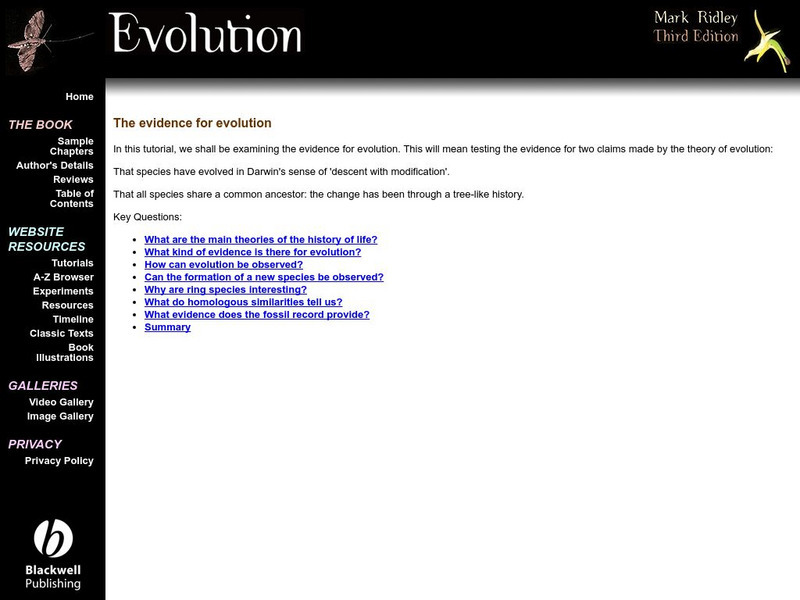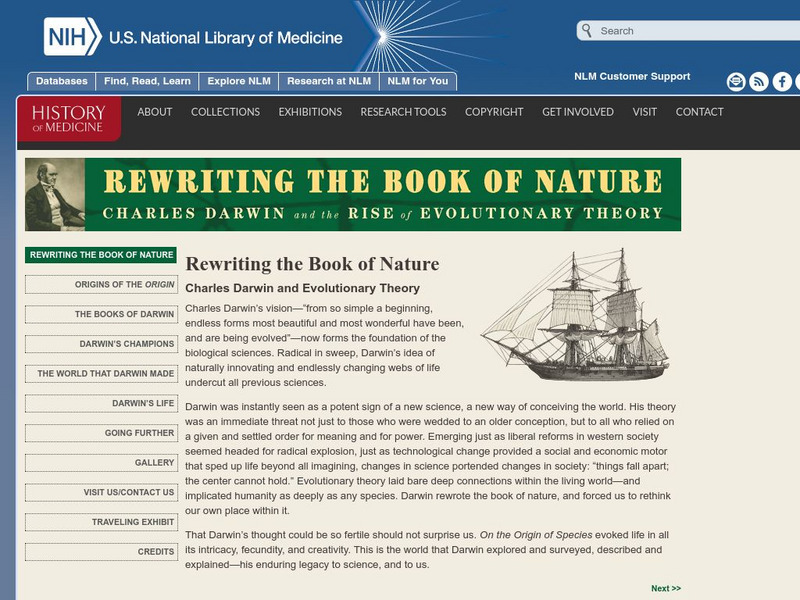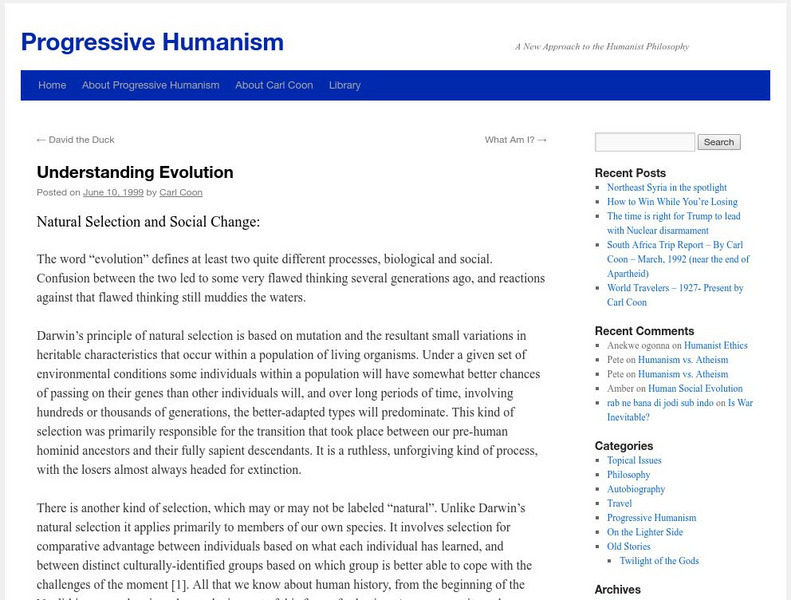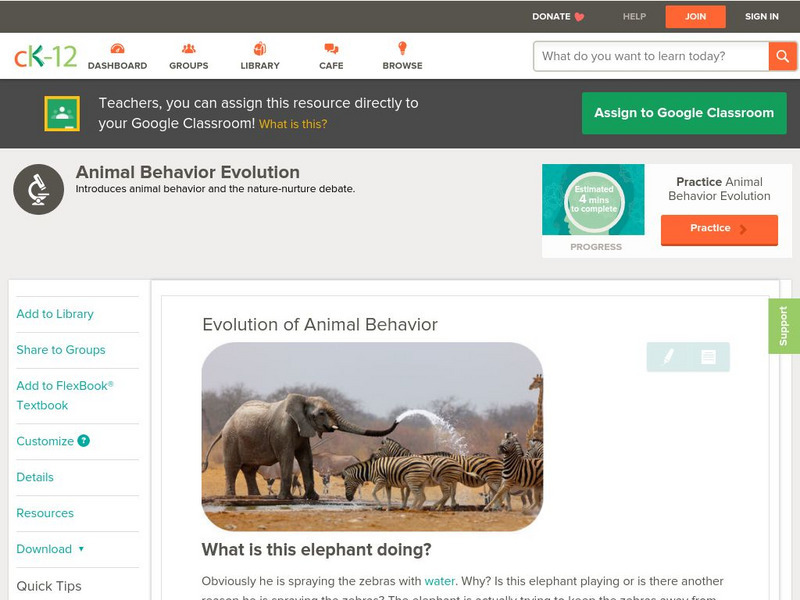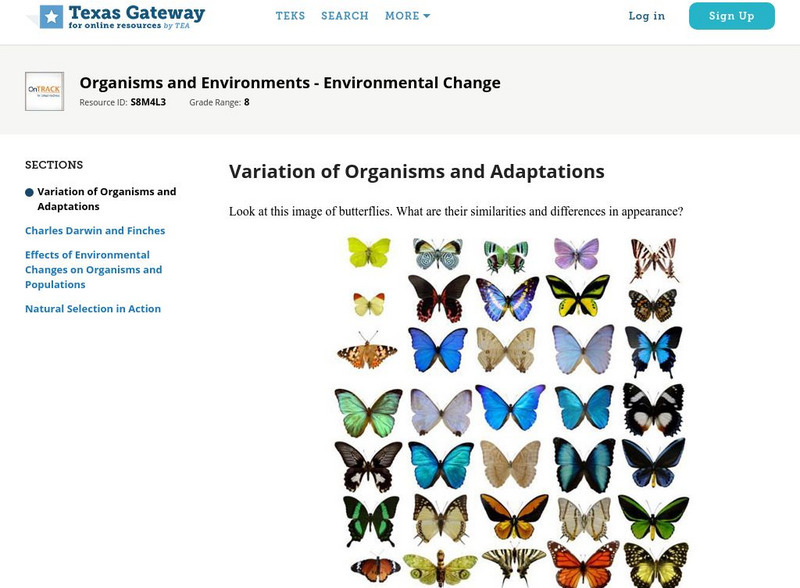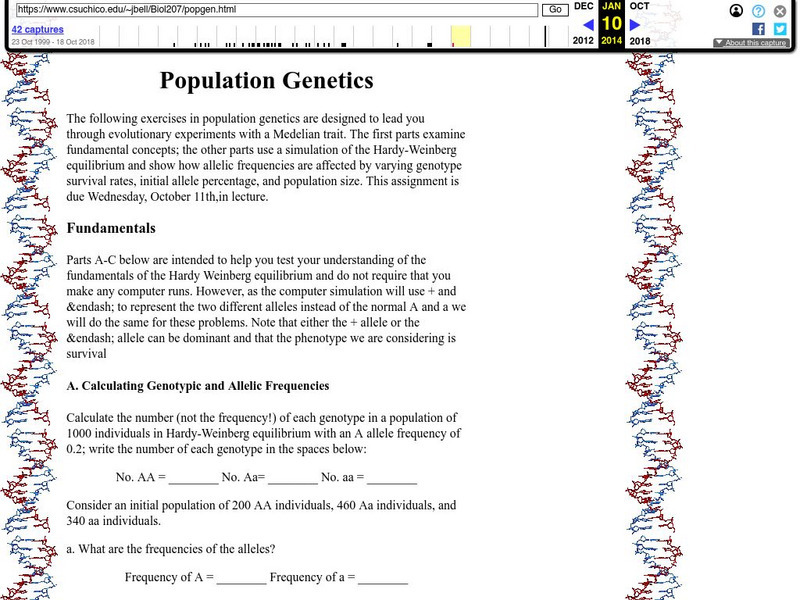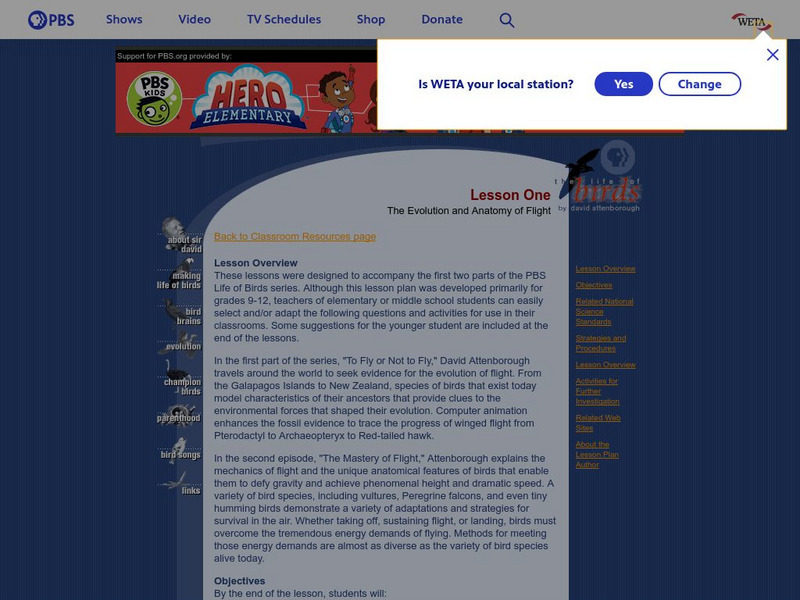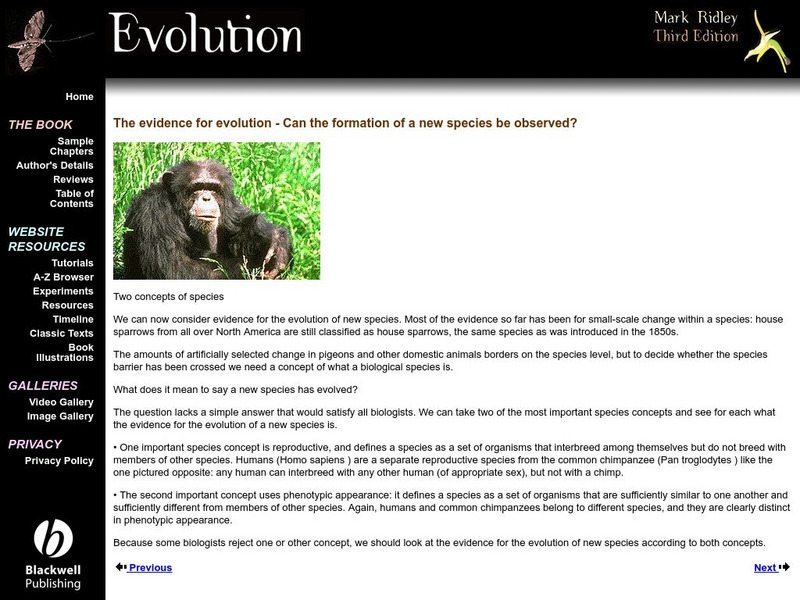Cosmo Learning
Cosmo Learning: Principles of Evolution, Ecology and Behavior
A collection of video lectures introducing beginning biology students to the principles of evolution, ecology, and behavior. The course was taught three times a week for a semester at Yale University. The course discusses concepts of...
CK-12 Foundation
Ck 12: Earth Science: Adaptation and Evolution of Populations Study Guide
[Free Registration/Login may be required to access all resource tools.] Summarizes the key points about adaptations, mutation, evolution, and natural selection. Includes a few questions to check for understanding.
Other
The Evidence for Evolution
These pages are part of a site called "Evolution," that accompanies a textbook by the same name. Mark Ridley is the author, and in this section he discusses the evidence for evolution.
Indiana University
Ensi: Introduction to Evolution Lesson Plan
This unit plan presented by the Evolution and the Nature of Science Institutes is one way to introduce evolution. The authors have created a Pre-test about what evolution is/is not to address misconceptions. There are handouts and...
Estrella Mountain Community College
Online Biology Book: The Modern View of Evolution
Take a closer look into the modern view of evolution. This article includes many pieces of evidence, all which support the theory of evolution.
National Institutes of Health
National Library of Medicine: Rewriting the Book of Nature
Explore the work of Charles Darwin and the theory of evolution. This comprehensive resource includes information about Darwin's life in addition to the process of species evolution.
BioMan Biology
Bio Man Biology: Evolution and Classification Quizzes
A multiple-choice quiz on the mechanisms of evolution.
PBS
Pbs Teachers:how Does Evolution Work?
Complete a hands-on lab simulation of natural selection to learn how it impacts a breeding population. Perform an online laboratory simulation and examine the interplay between natural and sexual selection in a population.
Howard Hughes Medical Institute
Hhmi: Bio Interactive: Pocket Mouse Film With Quiz
Learn about selective pressure and how genes are involved in adaptations by watching this video on pocket mice. The video focuses on the research of Dr. Michael Nachman, "whose work in the field and in the lab has quantified the...
American Institute of Biological Sciences
Action Bioscience: The Challenge of Living at High Altitudes
Physical anthropologists are studying the ongoing evolution of modern humans. This article features research done on those living in high altitudes over thousands of years with the intention to discover things such as the role of natural...
CK-12 Foundation
Ck 12: Earth Science: Evolution, Plate Tectonics, and Climate Change
[Free Registration/Login may be required to access all resource tools.] Looks at the theories of evolution, plate tectonics, and global warming.
Other
Progressive Humanism: Understanding Evolution
Paper from Progressive Humanism focusing on cultural selection in conjunction with Darwin's theory of natural selection.
PBS
Pbs Learning Media: Darwin's Letters: Collecting Evidence
This group of letters is a sample of the extensive correspondence Darwin carried on with a wide group of friends and colleagues as he collected evidence to support his theory of evolution by natural selection. From Charles Darwin's...
CK-12 Foundation
Ck 12: Biology: Evolution of Animal Behavior
[Free Registration/Login may be required to access all resource tools.] Discusses the evolution of animal behavior and the nature-nurture debate.
History Tools
History Tools: Charles Darwin on the Origin of Species 1859 [Pdf]
Features excerpts from the introduction and conclusion of Charles Darwin's famous book, On the Origin of Species by Means of Natural Selection.
University of California
University of California Museum of Paleontology: Evolution at Different Scales
Macroevolution and microevolution are defined, along with mutation, migration, genetic drift, and natural selection, which are "established mechanisms of evolutionary change."
Read Works
Read Works: Famous Scientists Charles Darwin
[Free Registration/Login Required] This passage discusses Charles Darwin and his theory of natural selection in evolution. This passage is a stand-alone curricular piece that reinforces essential reading skills and strategies and...
W. W. Norton
W.w. Norton & Company: Alfred Russel Wallace's Comments on Darwinism
An excerpt from "Darwinism: an Exposition of the Theory of Natural Selection with some of its Applications", by Alfred Wallace. He was a contemporary of Darwin who is credited as the co-developer of the theory of natural selection.
Famous Scientists
Famous Scientists: Charles Darwin
A short biography of Charles Darwin, and how he discovered evolutionary theory and natural selection.
The Wonder of Science
The Wonder of Science: Ms Ls4 6: Adaptation of Populations Over Time
Middle schoolers use mathematical representations to support explanations of how natural selection may lead to increases and decreases of specific traits in populations over time.
Texas Education Agency
Texas Gateway: Organisms and Environments: Environmental Change
Explore natural selection, environmental change, and evolution in this interactive tutorial.
California State University
Csu Chico: Population Genetics
This is a group of Mendelian Genetics exercises that are designed to show the evolution of a trait within a population. The site covers instruction in calculating genotypic and allelic frequencies, determining dominance, the...
PBS
Pbs the Life of Birds: Evolution and Anatomy of Flight
This lesson plan, designed to accompany the PBS series "Life of Birds," explores how environmental pressures influenced the evolution of wings, how natural selection resulted in the diversity of bird species, and the mechanics of bird...
Other
Evidence for Evolution: Formation of New Species
These pages are part of a site called Evolution that accompanies a textbook by the same name. Mark Ridley is the author. These pages offer an explanation of speciation using reproductive isolation and differences in phenotype.



